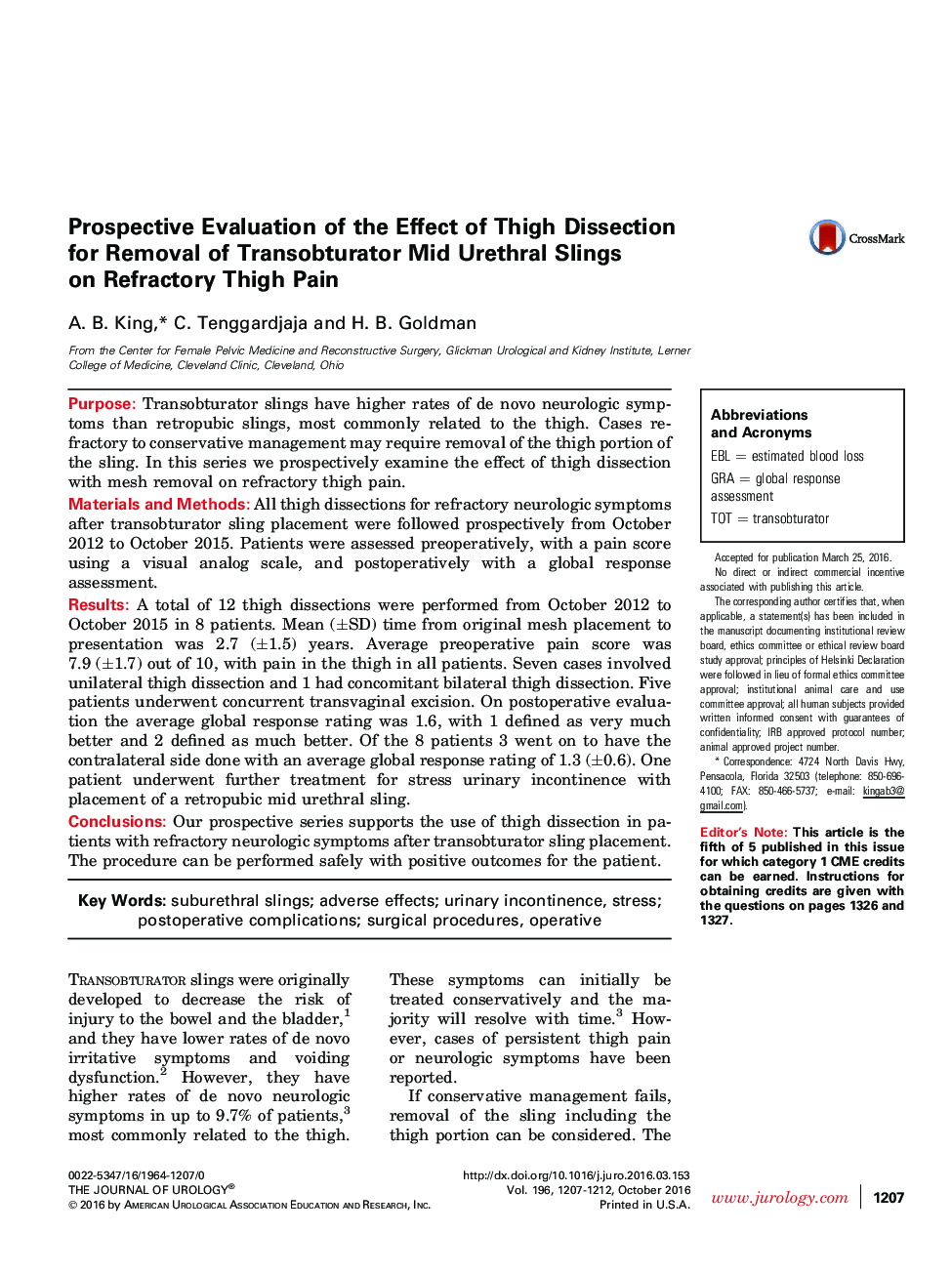| Article ID | Journal | Published Year | Pages | File Type |
|---|---|---|---|---|
| 3857767 | The Journal of Urology | 2016 | 6 Pages |
PurposeTransobturator slings have higher rates of de novo neurologic symptoms than retropubic slings, most commonly related to the thigh. Cases refractory to conservative management may require removal of the thigh portion of the sling. In this series we prospectively examine the effect of thigh dissection with mesh removal on refractory thigh pain.Materials and MethodsAll thigh dissections for refractory neurologic symptoms after transobturator sling placement were followed prospectively from October 2012 to October 2015. Patients were assessed preoperatively, with a pain score using a visual analog scale, and postoperatively with a global response assessment.ResultsA total of 12 thigh dissections were performed from October 2012 to October 2015 in 8 patients. Mean (±SD) time from original mesh placement to presentation was 2.7 (±1.5) years. Average preoperative pain score was 7.9 (±1.7) out of 10, with pain in the thigh in all patients. Seven cases involved unilateral thigh dissection and 1 had concomitant bilateral thigh dissection. Five patients underwent concurrent transvaginal excision. On postoperative evaluation the average global response rating was 1.6, with 1 defined as very much better and 2 defined as much better. Of the 8 patients 3 went on to have the contralateral side done with an average global response rating of 1.3 (±0.6). One patient underwent further treatment for stress urinary incontinence with placement of a retropubic mid urethral sling.ConclusionsOur prospective series supports the use of thigh dissection in patients with refractory neurologic symptoms after transobturator sling placement. The procedure can be performed safely with positive outcomes for the patient.
